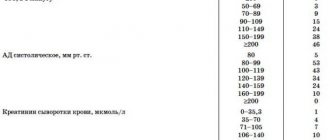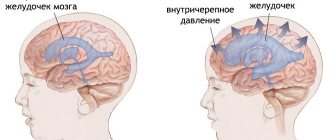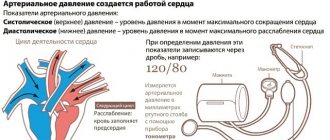Pressure is a quantity that is equal to the force acting strictly perpendicular to a unit surface area. Calculated using the formula: P = F/S. The international calculation system assumes the measurement of this value in pascals (1 Pa is equal to a force of 1 newton per area of 1 square meter, N/m2). But since this is a fairly low pressure, measurements are often indicated in kPa or MPa. In various industries it is customary to use their own number systems, in the automotive, pressure can be measured: in bars, atmospheres, kilograms of force per cm² (technical atmosphere), mega pascals or psi (psi).
To quickly convert units of measurement, you should focus on the following relationship of values to each other:
1 MPa = 10 bar;
100 kPa = 1 bar;
1 bar ≈ 1 atm;
3 atm = 44 psi;
1 PSI ≈ 0.07 kgf/cm²;
1 kgf/cm² = 1 at.
| Pressure unit ratio table | ||||||
| Magnitude | MPa | bar | atm | kgf/cm2 | psi | at |
| 1 MPa | 1 | 10 | 9,8692 | 10,197 | 145,04 | 10.19716 |
| 1 bar | 0,1 | 1 | 0,9869 | 1,0197 | 14,504 | 1.019716 |
| 1 atm (physical atmosphere) | 0,10133 | 1,0133 | 1 | 1,0333 | 14,696 | 1.033227 |
| 1 kgf/cm2 | 0,098066 | 0,98066 | 0,96784 | 1 | 14,223 | 1 |
| 1 PSI (lb/in²) | 0,006894 | 0,06894 | 0,068045 | 0,070307 | 1 | 0.070308 |
| 1 at (technical atmosphere) | 0.098066 | 0.980665 | 0.96784 | 1 | 14.223 | 1 |
International System of Units (SI)
Pressure P is the physical quantity of force F acting on a unit surface area S, directed perpendicular to this surface. those. P=F/S.
In the International System of Units (SI), pressure is measured in Pascals: Pa is the Russian designation. Pa - international. 1 Pa = 1 Newton / 1 sq. meter (1 N/m²)
For practical measurements in instrumentation and automation, 1 Pa is often too small a pressure value, and to operate with real data, multiplying prefixes are used - (kilo, Mega), multiplying values by 1 thousand. and 1 million times respectively. 1 MPa = 1000 kPa = 1,000,000 Pa Also, the scales of pressure measuring instruments can be directly calibrated in Newton / meter, or their derivatives: Kilonewton, Meganewton / m², cm², mm².
Then we get the following correspondence: 1 MPa = 1 MN/m² = 1 N/mm² = 100 N/cm² = 1000 kN/m² = 1000 kPa = 1000000 N/m² = 1000000 Pa
In Russia and Europe, the units bar (bar) and kgf/m² (kgf/m²), as well as their derivatives (mbar, kgf/cm²), are also widely used for measuring pressure. 1 bar is a non-systemic unit equal to 100,000 Pa. 1 kgf/cm² is a unit of pressure measurement in the MKGSS system, and is widely used in industrial pressure measurements. 1 kgf/cm² = 10000 kgf/m² = 0.980665 bar = 98066.5 Pa
Table 1. Conversion of pressure measurement units (their ratio):Table 2. Conversion of physical pressure units (optional):
Unit of measurement
| Pa | kPa | MPa | kgf/m2 | kgf/cm2 | mmHg. | mm water column | bar | |
| 1 Pa | 1 | 10-3 | 10-6 | 0,1019716 | 10,19716*10-6 | 0,00750062 | 0,1019716 | 0,00001 |
| 1 kPa | 1000 | 1 | 10-3 | 101,9716 | 0,01019716 | 7,50062 | 101,9716 | 0,01 |
| 1 MPa | 1000000 | 1000 | 1 | 101971,6 | 10,19716 | 7500,62 | 101971,6 | 10 |
| 1 kgf/m2 | 9,80665 | 9,80665*10-3 | 9,80665*10-6 | 1 | 0,0001 | 0,0735559 | 1 | 98,0665*10-6 |
| 1 kgf/cm2 | 98066,5 | 98,0665 | 0,0980665 | 10000 | 1 | 735,559 | 10000 | 0,980665 |
| 1 mmHg (at 0 deg) | 133,3224 | 0,1223224 | 0,0001333224 | 13,5951 | 0,00135951 | 1 | 13,5951 | 0,00133224 |
| 1 mm water column (at 0 deg) | 9,80665 | 9,807750*10-3 | 9,80665*10-6 | 1 | 0,0001 | 0,0735559 | 1 | 98,0665*10-6 |
| 1 bar | 100000 | 100 | 0,1 | 10197,16 | 1,019716 | 750,062 | 10197,16 | 1 |
1 Pa - 1 Pascal; 1 kPa - 1 Kilopascal; 1 MPa - 1 Megapascal; 1 kgf/m2 - 1 Kilogram-force per square meter; 1 kgf/cm2 - 1 Kilogram-force per square centimeter; 1 mmHg (at 0 degrees) - 1 Millimeter of mercury (at 0 degrees); 1 mm water column (at 0 degrees) - 1 millimeter of water column (at 0 degrees).
The relationship between some pressure units:
Bar: 1 bar = 0.1 MPa 1 bar = 100 kPa 1 bar = 1000 mbar 1 bar = 1.019716 kgf/cm2 1 bar = 750 mmHg. (torr) 1 bar = 10197.16 kgf/m2 (atm.tech.) 1 bar = 10197.16 mm. water Art. 1 bar = 0.98692326672 atm. physical 1 bar = 10 N/cm2 1 bar = 1,000,000 dynes/cm2 = 106 dynes/cm2 1 bar = 14.50377 psi (pounds per square inch) 1 mbar = 0.1 kPa 1 mbar = 0.75 mm. rt. Art. (torr) 1 mbar = 10.19716 kgf/m2 1 mbar = 10.19716 mm. water Art. 1 mbar = 0.401463 in.H2O (inch of water)
KGS/CM2 (ATM.TECH.): 1 kgf/cm2 = 0.0980665 MPa 1 kgf/cm2 = 98.0665 kPa 1 kgf/cm2 = 0.980665 bar 1 kgf/cm2 = 980.665 mbar 1 kgf/cm2 = 736 mmHg. (torr) 1 kgf/cm2 = 10000 mm.water column. 1 kgf/cm2 = 0.968 atm. physical 1 kgf/cm2 = 14.22334 psi 1 kgf/cm2 = 9.80665 N/cm2 1 kgf/cm2 = 98066.5 N/m2 1 kgf/cm2 = 10000 kgf/m2 1 kgf/cm2 = 0.01 kgf/mm2
MPa: 1 MPa = 1000000 Pa 1 MPa = 1000 kPa 1 MPa = 10.19716 kgf/cm2 (atm.tech.) 1 MPa = 10 bar 1 MPa = 7500 mm. rt. Art. (torr) 1 MPa = 101971.6 mm. water Art. 1 MPa = 101971.6 kgf/m2 1 MPa = 9.87 atm. physical 1 MPa = 106 N/m2 1 MPa = 107 dynes/cm2 1 MPa = 145.0377 psi 1 MPa = 4014.63 in.H2O
MMHG. (TOPP) 1 mmHg. = 133.3 * 10-6 MPa 1 mmHg. = 0.1333 kPa 1 mmHg. = 133.3 Pa 1 mmHg. = 13.6 * 10-4 kgf/cm2 1 mmHg. = 13.33 * 10-4 bar 1 mmHg = 1.333 mbar 1 mmHg = 13.6 mm.water column. 1 mmHg = 13.16 * 10-4 atm. physical 1 mmHg = 13.6 kgf/m2 1 mmHg. = 0.019325 psi 1 mmHg = 75.051 N/cm2
kPa: 1 kPa = 1000 Pa 1 kPa = 0.001 MPa 1 kPa = 0.01019716 kgf/cm2 1 kPa = 0.01 bar 1 kPa = 7.5 mm. rt. st. (torr) 1 kPa = 101.9716 kgf/m2 1 kPa = 0.00987 atm. physical 1 kPa = 1000 N/m2 1 kPa = 10000 dyne/cm2 1 kPa = 10 mbar 1 kPa = 101.9716 mm. water Art. 1 kPa = 4.01463 in.H2O 1 kPa = 0.1450377 psi 1 kPa = 0.1 N/cm2
MM.WATER.ST.(KGS/M2): 1 mm.Water.st. = 9.80665 * 10 -6 MPa 1 mm.water column. = 9.80665 * 10 -3 kPa 1 mm.water column. = 0.980665 * 10-4 bar 1 mm.water column. = 0.0980665 mbar 1 mm.water column. = 0.968 * 10-4 atm.physical. 1 mm.water column = 0.0736 mmHg (torr) 1 mm.water column. = 0.0001 kgf/cm2 1 mm.water column. = 9.80665 Pa 1 mm.water column. = 9.80665 * 10-4 N/cm2 1 mm.water column. = 703.7516 psi
We deliberately do not suggest using an automatic online converter to get instant results. In return, we offer Users reference information in tabular form, familiarization with which may help to understand the meaning and mechanism of converting pressure units, and will allow them to learn how to independently recalculate the available source data into the required physical quantities. Surely, for an engineer, such skills will be more productive than machine calculations and will play a positive role in practice in the future.
When you are in production, sometimes you will need to quickly determine the situation without having an electronic converter and Internet access at hand, and for this it is important to remember and have a clear understanding of the relationship between common physical units of measurement. For example, some time ago some changes occurred in Russia - in metrology they moved away from the general use of some units to other physical units for measuring pressure, so it became important to independently be able to convert values from kgf/cm2 to MPa (kilogram-force per square centimeter to megapascals) , kgf/cm2 in kPa (kilogram-force per square centimeter in kilopascals). Having remembered how many kgf/cm2 or kilopascals are contained in one MPa, the mutual conversion of these units can be easily calculated “in your head” without the involvement of outside help and gadgets. Basic knowledge, the ability to use it and some practical experience can be irreplaceable and valuable at a crucial moment.
Atmosphere
The atmosphere is an off-system unit of pressure measurement approximately equal to the atmospheric pressure of the Earth at the level of the World Ocean. There are two concepts of atmosphere for measuring pressure:
- Physical (atm) - equal to the pressure of a column of mercury 760 mm high at a temperature of 0° C. 1 atm = 101325 Pa
- Technical (at) - equal to the pressure produced by a force of 1 kgf per area of 1 cm². 1 at = 98066.5 Pa = 1 kgf/cm²
In Russia, only the technical atmosphere is allowed for use in measurements, and its validity is limited, according to some sources, to 2021.
Physical vacuum
Vacuum is the absence of pressure. More precisely, its almost complete absence. Absolute vacuum is an approximation, like an ideal gas in thermodynamics and a material point in mechanics.
Depending on the concentration of the substance, low, medium and high vacuum are distinguished. The best approximation to a physical vacuum is outer space, in which the concentration of molecules and pressure are minimal.
There is an almost complete absence of pressure in space
Pressure is the main thermodynamic parameter of the state of the system. The pressure of air or other gas can be determined not only using instruments, but also using equations, formulas and the laws of thermodynamics. And if you don’t have time to figure it out, the student service will help solve any problem of determining pressure.
water column
The water column meter is a non-systemic unit of pressure measurement used in a number of industries. Physically, it is equal to the pressure of a column of water 1 m high at a temperature of about 4 ° C and the standard gravity acceleration for calibration - 9.80665 m/sec². m water Art. - Russian designation. mH2O - international.
The derived units are cm water. Art. and mm water. Art. 1 m water Art. = 100 cm water. Art. = 1000 mm water. Art. Relates to other pressure units accordingly: 1 mH2O. Art. = 1000 kgf/m² = 0.0980665 bar = 9.80665 Pa = 73.55592400691 mm Hg. Art.
Arterial pressure
Another example where we encounter pressure in everyday life is when measuring blood pressure.
Blood pressure is blood pressure, i.e. the pressure that blood exerts on the walls of blood vessels, in this case arteries.
If you measure your blood pressure and it is 120 over 80 , then everything is fine. If it ’s 90 by 50 or 240 by 180 , then you definitely won’t be interested in understanding how this pressure is measured and what it even means.
Blood pressure - the pressure of blood on the walls of the arteries
However, the question arises: 120 to 80 of what exactly? Pascals, millimeters of mercury, atmospheres or some other units of measurement?
Blood pressure is measured in millimeters of mercury. It determines the excess of fluid pressure in the circulatory system above atmospheric pressure.
Blood exerts pressure on the vessels and thereby compensates for the effect of atmospheric pressure. If it were otherwise, we would simply be crushed by the huge mass of air above us.
But why are there two numbers in the blood pressure measurement?
By the way! For our readers there is now a 10% discount on any type of work
The fact is that the blood does not move evenly in the vessels, but in jerks. The first number (120) is called systolic pressure. This is the pressure on the walls of blood vessels at the moment of contraction of the heart muscle, its magnitude is the greatest. The second number (80) determines the lowest value and is called diastolic pressure.
During the measurement, the values of systolic and diastolic pressure are recorded. For example, for a healthy person, the typical blood pressure value is 120 per 80 millimeters of mercury. This means that the systolic pressure is 120 mm. rt. Art., and diastolic – 80 mm Hg. Art. The difference between systolic and diastolic pressure is called pulse pressure.
US and British units
In the USA and Britain, other units of measurement of pressure are also used.
This is because lengths are expressed in feet and inches, and weights are expressed in pounds, British tons, and American tons. Examples of some of them:
- Inch of water Symbol: inH2O = 249.08891 Pa.
- Foot water column Symbol: ftH2O = 2989.006692 Pa.
- Inch of mercury Symbol: inHg = 3386.38815789474 Pa.
- Pound per square inch Symbol: psi = 6894.757293178 Pa.
- 1000 psi Symbol: ksi = 6894757.2931783 Pa.
- Pounds per square foot Symbol: psf = 47.8802589803 Pa.
- American (short) ton per square inch Symbol: tsi = 13789514.58633672267344 Pa.
- US (short) ton per square foot Symbol: tsf = 95760.51796067168523226 Pa.
- British (long) ton per square inch Symbol: br. tsi = 15444256.3366971 Pa.
- British (long) ton per square foot Symbol: br. tsf = 107251.780115952 Pa.
What is an online unit converter and how to use it
To convert one pressure value into another, you can use specially written scripts (programs) with a convenient user interface (example below).
Calculator for converting pressure in bar to pressure in megapascals, kilograms of force, pound of force and atmospheres
=
1 MPa is equal to 9.8692 physical atmosphere, 10.197 kgf/cm², 145.04 lb/in², 10.19716 technical atmosphere
It is enough to enter the required value in one of the form fields, and numbers appear in all the others, calculated using well-known formulas for converting one unit to another.
If you have access to the Internet, it is very convenient to convert values through such an online conversion; you do not need to look for conversion factors, remember formulas, or use a calculator.
Pascal
So, pascal (Pa) is a measure of pressure, mechanical stress, elastic modulus and some other characteristics used in technology. A pressure of 1 pascal is created by a force of 1 newton, uniformly distributed over an area of 1 square meter perpendicular to the direction of its action (1 Pa = 1 N/m2). Remembering that 1 N = 1 kg∙m/s2, we can express pascal in terms of SI base units: 1 Pa = 1 kg/(m∙s2).
Pressure is a scalar quantity; it characterizes the result of the action of an external force on a surface distributed over its area. Let's explain this with an example: imagine a person who first moves through loose snow on skis, and then takes them off and falls deep into a snowdrift. In the first case, the force - the weight of a person - is evenly distributed over a relatively large surface of the skis, in the other - only over the area of the foot, which leads to an increase in pressure, and consequently to subsidence of the snow.
External forces acting on a body tend to shift the position of the particles of which it consists. In response to this, internal forces will arise within the body that prevent displacement. The measure of the result of their action is called mechanical stress, which is also expressed in pascals.
Human blood pressure norms by age
Let's be honest, while we are young and healthy, we rarely worry about our blood pressure levels. We feel good and therefore there is no reason to worry. However, the human body ages and wears out. Unfortunately, this is a completely natural process from a physiological point of view, affecting not only the appearance of a person’s skin, but also all of his internal organs and systems, including blood pressure.
So, what should be the normal blood pressure in an adult and in children? How does age affect blood pressure? And at what age should you start monitoring this vital indicator?
To begin with, it should be noted that such an indicator as blood pressure actually depends on many individual factors (mental-emotional state of a person, time of day, taking certain medications, food or drinks, and so on).
Modern doctors are wary of all previously compiled tables with average blood pressure standards based on the patient’s age. The thing is that the latest research speaks in favor of an individual approach in each specific case. As a general rule, normal blood pressure in an adult of any age, no matter in men or women, should not exceed the threshold of 140/90 mm Hg. Art.
This means that if a person is 30 years old or at 50-60 years old the indicators are 130/80, then he does not have problems with the functioning of the heart. If the upper or systolic pressure exceeds 140/90 mm Hg, then the person is diagnosed with arterial hypertension . Drug treatment is carried out when the patient’s blood pressure “goes off scale” beyond 160/90 mm Hg.
When blood pressure is elevated, a person experiences the following symptoms:
- increased fatigue;
- noise in ears;
- swelling of the legs;
- dizziness;
- vision problems;
- decreased performance;
- nosebleed.
According to statistics, high upper blood pressure is most common in women, and low blood pressure is most common in older people of both sexes or in men. When the lower or diastolic blood pressure drops below 110/65 mm Hg, irreversible changes in internal organs and tissues occur, as blood supply deteriorates, and, consequently, oxygen saturation of the body.
If your blood pressure remains at 80 to 50 mm Hg, then you should immediately seek help from a specialist. Low lower blood pressure leads to oxygen starvation of the brain, which negatively affects the entire human body as a whole. This condition is as dangerous as high blood pressure. It is believed that the normal diastolic pressure of a person aged 60 years and older should not be more than 85-89 mmHg. Art.
Otherwise, hypotension or vegetative-vascular dystonia . With low blood pressure, symptoms such as:
- muscle weakness;
- headache;
- darkening of the eyes;
- dyspnea;
- lethargy;
- increased fatigue;
- photosensitivity , as well as discomfort from loud sounds;
- feeling of chills and coldness in the extremities.
Causes of low blood pressure may include:
- stressful situations;
- weather conditions, for example, stuffiness or sweltering heat;
- fatigue due to high loads;
- chronic lack of sleep;
- allergic reaction;
- certain medications, such as heart medications, pain medications, antibiotics , or antispasmodics .
However, there are examples where people live quietly throughout their lives with a lower blood pressure of 50 mmHg. Art. and, for example, former athletes whose heart muscles are hypertrophied due to constant physical activity feel great. That is why each individual person may have his own normal blood pressure readings, at which he feels great and lives a full life.
Causes of changes in blood pressure
High diastolic pressure indicates the presence of kidney, thyroid, or adrenal disease.
An increase in blood pressure can be caused by the following reasons:
- overweight;
- stress;
- atherosclerosis and some other diseases ;
- smoking and other bad habits;
- diabetes;
- unbalanced diet;
- sedentary lifestyle;
- weather changes.
Another important point regarding human blood pressure. To correctly determine all three indicators (upper, lower pressure and pulse), you need to follow simple measurement rules. Firstly, the optimal time to measure blood pressure is in the morning. Moreover, it is better to place the tonometer at the level of the heart, so the measurement will be the most accurate.
Secondly, the pressure may “jump” due to a sudden change in the person’s body posture. That is why you need to measure it after waking up, without getting out of bed. The arm with the tonometer cuff should be horizontal and motionless. Otherwise, the indicators produced by the device will have an error.
It is noteworthy that the difference between the indicators on both hands should not be more than 5 mm. The ideal situation is when the data does not differ depending on whether the pressure was measured on the right or left hand. If the indicators differ by 10 mm, then the risk of developing atherosclerosis , and a difference of 15-20 mm indicates abnormalities in the development of blood vessels or their stenosis .
What are the blood pressure standards for a person, table
Let us repeat once again that the table below with blood pressure norms by age is just reference material. Blood pressure is not a constant value and can fluctuate depending on many factors.
Pressure rate table:
| Age, years | Pressure (minimum value), mmHg. | Pressure (average), mmHg. | Pressure (maximum value), mmHg. |
| Up to a year | 75/50 | 90/60 | 100/75 |
| 1-5 | 80/55 | 95/65 | 110/79 |
| 6-13 | 90/60 | 105/70 | 115/80 |
| 14-19 | 105/73 | 117/77 | 120/81 |
| 20-24 | 108/75 | 120/79 | 132/83 |
| 25-29 | 109/76 | 121/80 | 133/84 |
| 30-34 | 110/77 | 122/81 | 134/85 |
| 35-39 | 111/78 | 123/82 | 135/86 |
| 40-44 | 112/79 | 125/83 | 137/87 |
| 45-49 | 115/80 | 127/84 | 139/88 |
| 50-54 | 116/81 | 129/85 | 142/89 |
| 55-59 | 118/82 | 131/86 | 144/90 |
| 60-64 | 121/83 | 134/87 | 147/91 |
In addition, in some categories of patients, for example, pregnant women , whose body, including the circulatory system, undergoes a number of changes during the period of bearing a child, the indicators may differ, and this will not be considered a dangerous deviation. However, as a guide, these blood pressure norms for adults can be useful for comparing your indicators with average numbers.
Table of blood pressure in children by age
Let's talk more about children's blood pressure. To begin with, it should be noted that in medicine, separate norms for blood pressure have been established for children from 0 to 10 years old and for adolescents, i.e. from 11 years and older. This is due, first of all, to the structure of the child’s heart at different ages, as well as to some changes in hormonal levels that occur during puberty.
It is important to emphasize that children’s blood pressure will be higher the older the child is; this is due to the greater elasticity of blood vessels in newborns and preschool children. However, with age, not only the elasticity of blood vessels changes, but also other parameters of the cardiovascular system, for example, the width of the lumen of veins and arteries, the area of the capillary network, and so on, which also affects blood pressure.
In addition, blood pressure indicators are influenced not only by the characteristics of the cardiovascular system (the structure and boundaries of the heart in children, the elasticity of blood vessels), but also by the presence of congenital developmental pathologies ( heart defects ) and the state of the nervous system.
Normal blood pressure for people of different ages:
| Age | Blood pressure (mm Hg) | |||
| Systolic | Diastolic | |||
| min | max | min | max | |
| Up to 2 weeks | 60 | 96 | 40 | 50 |
| 2-4 weeks | 80 | 112 | 40 | 74 |
| 2-12 months | 90 | 112 | 50 | 74 |
| 2-3 years | 100 | 112 | 60 | 74 |
| 3-5 years | 100 | 116 | 60 | 76 |
| 6-9 years | 100 | 122 | 60 | 78 |
| 10-12 years | 110 | 126 | 70 | 82 |
| 13-15 years old | 110 | 136 | 70 | 86 |
As can be seen from the table, the norm for newborn children (60-96 per 40-50 mmHg) is considered to be low blood pressure compared to older age. This is due to a dense network of capillaries and high vascular elasticity.
By the end of the first year of a child’s life, the indicators (90-112 by 50-74 mm Hg) increase noticeably, due to the development of the cardiovascular system (the tone of the vascular walls increases) and the whole organism as a whole. However, after a year, the growth of indicators slows down significantly and blood pressure is considered normal at a level of 100-112 at 60-74 mm Hg. These indicators gradually increase by 5 years to 100-116 by 60-76 mmHg.
Many parents of younger schoolchildren worry about what normal blood pressure is for a child aged 9 years and older. When a child goes to school, his life changes dramatically - there are more loads and responsibilities, and less free time. Therefore, the child’s body reacts differently to such a rapid change in usual life.
In principle, blood pressure indicators in children 6-9 years old differ slightly from the previous age period, only their maximum permissible limits expand (100-122 by 60-78 mm Hg). Pediatricians warn parents that at this age, children's blood pressure may deviate from the norm due to increased physical and psycho-emotional stress associated with entering school.
There is no reason to worry if the child is still feeling well. However, if you notice that your little schoolchild is too tired, often complains of headaches, is lethargic and in no mood, then this is a reason to be wary and check your blood pressure readings.
Normal blood pressure in a teenager
According to the table, blood pressure is normal in children 10-16 years old, if its levels do not exceed 110-136 per 70-86 mmHg. It is believed that at the age of 12 the so-called “transitional age” begins. Many parents are afraid of this period, since a child from an affectionate and obedient baby under the influence of hormones can turn into an emotionally unstable, touchy and rebellious teenager.
Unfortunately, this period is dangerous not only for sudden changes in mood, but also for the changes that occur in the child’s body. Hormones that are produced in larger quantities affect all vital human systems, including the cardiovascular system.
Therefore, pressure indicators during adolescence may deviate slightly from the above norms. The key word in this phrase is insignificant. This means that if a teenager feels unwell and has symptoms of high or low blood pressure, he needs to urgently contact a specialist who will examine the child and prescribe appropriate treatment.
A healthy body can adjust itself and prepare for adult life. At 13-15 years old, blood pressure will stop “jumping” and return to normal. However, in the presence of deviations and certain diseases, medical intervention and drug adjustment are required.
High blood pressure may be a symptom of:
- arterial hypertension (140/90 mmHg), which without appropriate treatment can lead to a severe hypertensive crisis ;
- symptomatic hypertension , which is characteristic of renal vascular diseases and adrenal tumors;
- vegetative-vascular dystonia , a disease characterized by surges in blood pressure within the range of 140/90 mmHg;
- lower blood pressure may increase due to pathologies in the kidneys ( stenosis , glomerulonephritis , atherosclerosis , developmental abnormalities );
- Upper blood pressure increases due to defects in the development of the cardiovascular system, diseases of the thyroid gland, and also in patients with anemia .
If blood pressure is low, there is a risk of developing:
- hypotension;
- myocardial infarction;
- vegetative-vascular dystonia;
- anemia;
- myocardiopathy;
- hypothyroidism;
- adrenal insufficiency;
- diseases of the hypothalamic-pituitary system.
Controlling your blood pressure levels is really very important, and not only at 40 or after fifty. A tonometer, like a thermometer, should be in the home medicine cabinet of everyone who wants to live a healthy and fulfilling life. Spending five minutes of your time on a simple procedure for measuring blood pressure is actually not difficult, and your body will thank you very much for it.
Atmosphere pressure
Atmospheric pressure is the air pressure at a given location. It usually refers to the pressure of a column of air per unit surface area. Changes in atmospheric pressure affect weather and air temperature. People and animals suffer from severe pressure changes. Low blood pressure causes problems of varying severity in humans and animals, from mental and physical discomfort to fatal diseases. For this reason, aircraft cabins are maintained above atmospheric pressure at a given altitude because the atmospheric pressure at cruising altitude is too low.
The aneroid contains a sensor - a cylindrical corrugated box (bellows) connected to an arrow, which rotates when the pressure increases or decreases and, accordingly, the bellows compresses or expands
Atmospheric pressure decreases with altitude. People and animals living high in the mountains, such as the Himalayas, adapt to such conditions. Travelers, on the other hand, should take the necessary precautions to avoid getting sick due to the fact that the body is not used to such low pressure. Climbers, for example, can suffer from altitude sickness, which is associated with a lack of oxygen in the blood and oxygen starvation of the body. This disease is especially dangerous if you stay in the mountains for a long time. Exacerbation of altitude sickness leads to serious complications such as acute mountain sickness, high altitude pulmonary edema, high altitude cerebral edema and extreme mountain sickness. The danger of altitude and mountain sickness begins at an altitude of 2400 meters above sea level. To avoid altitude sickness, doctors advise not to use depressants such as alcohol and sleeping pills, drink plenty of fluids, and rise to altitude gradually, for example, on foot rather than by transport. It's also good to eat plenty of carbohydrates and get plenty of rest, especially if you're going uphill quickly. These measures will allow the body to get used to the oxygen deficiency caused by low atmospheric pressure. If you follow these recommendations, your body will be able to produce more red blood cells to transport oxygen to the brain and internal organs. To do this, the body will increase the pulse and breathing rate.
First medical aid in such cases is provided immediately. It is important to move the patient to a lower altitude where the atmospheric pressure is higher, preferably to an altitude lower than 2400 meters above sea level. Medicines and portable hyperbaric chambers are also used. These are lightweight, portable chambers that can be pressurized using a foot pump. A patient with altitude sickness is placed in a chamber in which the pressure corresponding to a lower altitude is maintained. Such a chamber is used only for providing first aid, after which the patient must be lowered below.
Some athletes use low pressure to improve circulation. Typically, this requires training to take place under normal conditions, and these athletes sleep in a low-pressure environment. Thus, their body gets used to high altitude conditions and begins to produce more red blood cells, which, in turn, increases the amount of oxygen in the blood, and allows them to achieve better results in sports. For this purpose, special tents are produced, the pressure in which is regulated. Some athletes even change the pressure in the entire bedroom, but sealing the bedroom is an expensive process.
Spacesuits
NASA's reusable transport spacecraft Atlantis is on display at the Kennedy Space Center.
Pilots and astronauts have to work in low-pressure environments, so they wear spacesuits that compensate for the low pressure environment. Space suits completely protect a person from the environment. They are used in space. Altitude-compensation suits are used by pilots at high altitudes to help the pilot breathe and counteract low barometric pressure.
Multiples and submultiples [edit | edit code ]
Decimal multiples and submultiples are formed using standard SI prefixes.
| Multiples | Dolnye | ||||||
| magnitude | Name | designation | magnitude | Name | designation | ||
| 10 1 Pa | decapascal | yesPa | daPa | 10 −1 Pa | decipascal | dPa | dPa |
| 10 2 Pa | hectopascal | hPa | hPa | 10 −2 Pa | centipascal | spa | cPa |
| 10 3 Pa | kilopascal | kPa | kPa | 10 −3 Pa | millipascal | mPa | mPa |
| 10 6 Pa | megapascal | MPa | MPa | 10 −6 Pa | micropascal | µPa | µPa |
| 10 9 Pa | gigapascal | GPa | GPa | 10 −9 Pa | nanopascal | nPa | nPa |
| 10 12 Pa | terapascal | TPa | TPa | 10 −12 Pa | picopascal | pPa | pPa |
| 10 15 Pa | petapascal | PPa | PPa | 10 −15 Pa | femtopascal | fPa | fPa |
| 10 18 Pa | exapascal | Epa | EPA | 10 −18 Pa | attopascal | aPa | aPa |
| 10 21 Pa | zettapascal | Salary | ZPa | 10 −21 Pa | zeptopascal | salary | zPa |
| 10 24 Pa | iottapascal | IPA | YPa | 10 −24 Pa | octopascal | iPa | yPa |
| not recommended for use | |||||||
Pressure in geology
Quartz crystal illuminated by laser pointer
Pressure is an important concept in geology. Without pressure, the formation of gemstones, both natural and artificial, is impossible. High pressure and high temperature are also necessary for the formation of oil from the remains of plants and animals. Unlike gems, which primarily form in rocks, oil forms at the bottom of rivers, lakes, or seas. Over time, more and more sand accumulates over these remains. The weight of water and sand presses on the remains of animal and plant organisms. Over time, this organic material sinks deeper and deeper into the earth, reaching several kilometers below the earth's surface. The temperature increases by 25 °C for every kilometer below the earth's surface, so at a depth of several kilometers the temperature reaches 50–80 °C. Depending on the temperature and temperature difference in the formation environment, natural gas may form instead of oil.
Diamond tools
Natural gemstones
The formation of gemstones is not always the same, but pressure is one of the main components of the process. For example, diamonds are formed in the Earth's mantle, under conditions of high pressure and high temperature. During volcanic eruptions, diamonds move to the upper layers of the Earth's surface thanks to magma. Some diamonds fall to Earth from meteorites, and scientists believe they formed on planets similar to Earth.
Synthetic gemstones
The production of synthetic gemstones began in the 1950s and has been gaining popularity recently. Some buyers prefer natural gemstones, but artificial stones are becoming more and more popular due to their low price and lack of hassles associated with mining natural gemstones. Thus, many buyers choose synthetic gemstones because their extraction and sale is not associated with human rights violations, child labor and the financing of wars and armed conflicts.
One of the technologies for growing diamonds in laboratory conditions is the method of growing crystals at high pressure and high temperature. In special devices, carbon is heated to 1000 °C and subjected to pressure of about 5 gigapascals. Typically, a small diamond is used as the seed crystal, and graphite is used for the carbon base. From it a new diamond grows. This is the most common method of growing diamonds, especially as gemstones, due to its low cost. The properties of diamonds grown in this way are the same or better than those of natural stones. The quality of synthetic diamonds depends on the method used to grow them. Compared to natural diamonds, which are often clear, most man-made diamonds are colored.
Due to their hardness, diamonds are widely used in manufacturing. In addition, their high thermal conductivity, optical properties and resistance to alkalis and acids are valued. Cutting tools are often coated with diamond dust, which is also used in abrasives and materials. Most of the diamonds in production are of artificial origin due to the low price and because the demand for such diamonds exceeds the ability to mine them in nature.
Some companies offer services for creating memorial diamonds from the ashes of the deceased. To do this, after cremation, the ashes are refined until carbon is obtained, and then a diamond is grown from it. Manufacturers advertise these diamonds as mementos of the departed, and their services are popular, especially in countries with large percentages of wealthy citizens, such as the United States and Japan.










